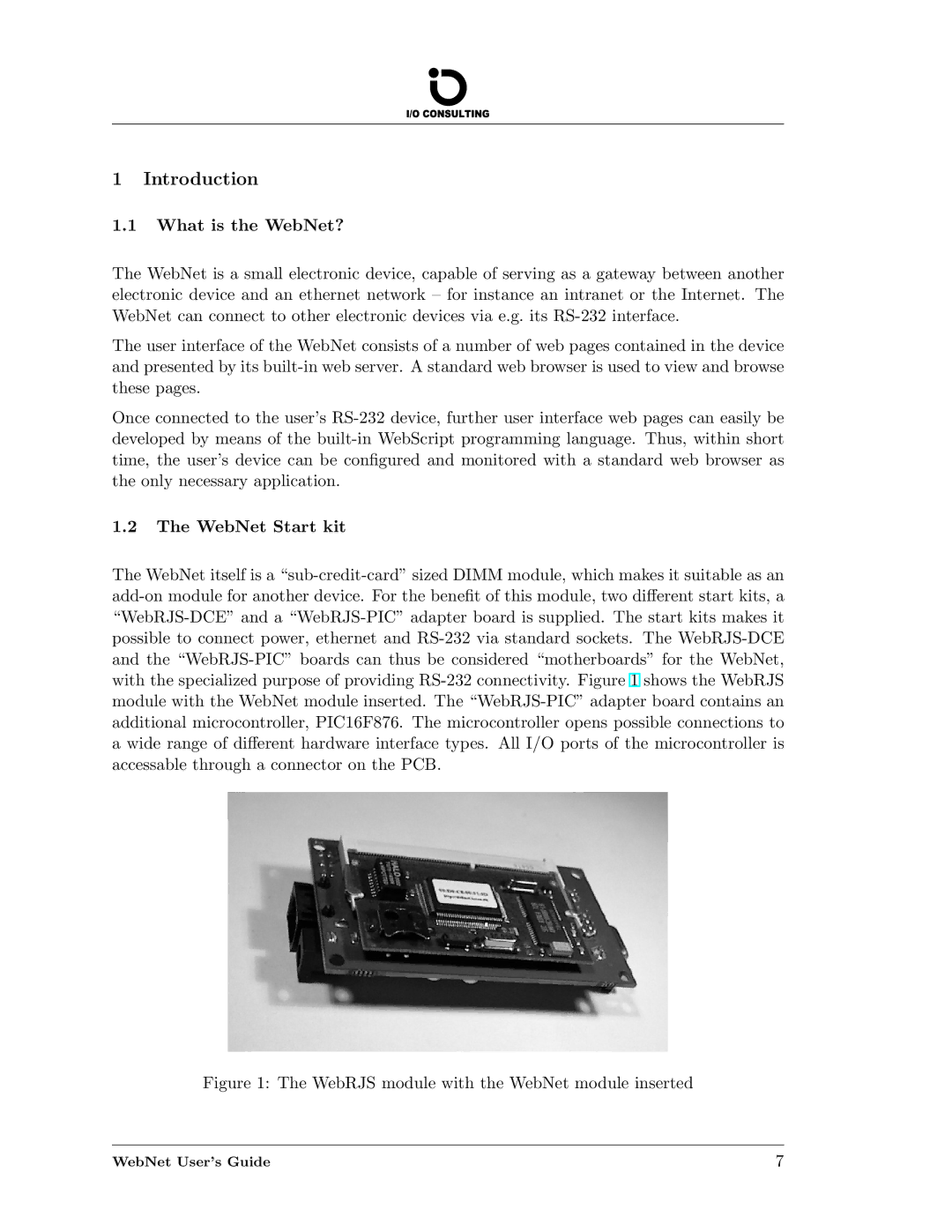
1Introduction
1.1What is the WebNet?
The WebNet is a small electronic device, capable of serving as a gateway between another electronic device and an ethernet network – for instance an intranet or the Internet. The WebNet can connect to other electronic devices via e.g. its RS-232 interface.
The user interface of the WebNet consists of a number of web pages contained in the device and presented by its built-in web server. A standard web browser is used to view and browse these pages.
Once connected to the user’s RS-232 device, further user interface web pages can easily be developed by means of the built-in WebScript programming language. Thus, within short time, the user’s device can be configured and monitored with a standard web browser as the only necessary application.
1.2The WebNet Start kit
The WebNet itself is a “sub-credit-card” sized DIMM module, which makes it suitable as an add-on module for another device. For the benefit of this module, two different start kits, a “WebRJS-DCE” and a “WebRJS-PIC” adapter board is supplied. The start kits makes it possible to connect power, ethernet and RS-232 via standard sockets. The WebRJS-DCE and the “WebRJS-PIC” boards can thus be considered “motherboards” for the WebNet, with the specialized purpose of providing RS-232 connectivity. Figure 1 shows the WebRJS module with the WebNet module inserted. The “WebRJS-PIC” adapter board contains an additional microcontroller, PIC16F876. The microcontroller opens possible connections to a wide range of different hardware interface types. All I/O ports of the microcontroller is accessable through a connector on the PCB.
Figure 1: The WebRJS module with the WebNet module inserted

